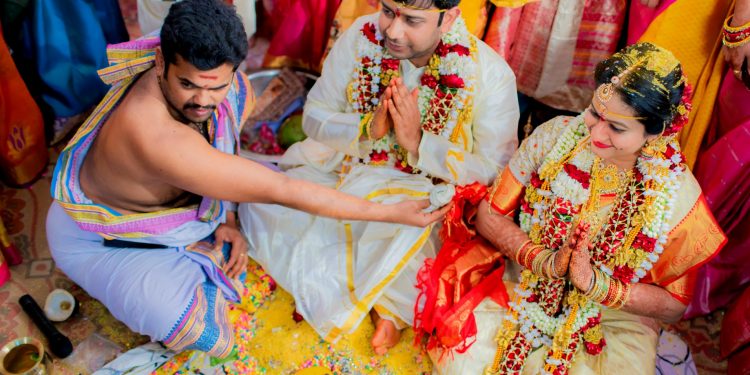Wedding is a ceremony where two individuals are united through rituals. Wedding traditions and customs vary greatly between cultures, ethnic groups, religions, countries and social classes.
Most wedding ceremonies involve an exchange of marriage vows by the couple, presentation of a gift (offering, rings, symbolic item, flowers, money), and a public proclamation of marriage by an authority figure or celebrant.
Special wedding garments are often worn, and the ceremony is sometimes followed by a wedding reception. Music, poetry, prayers or readings from religious texts or literature are also commonly incorporated into the ceremony.
The best available evidence suggests that it was about 4,350 years old. For thousands of years before that, most anthropologists believe, families consisted of loosely organised groups of as many as 30 people, with several male leaders, multiple women shared by them and children.
As hunter-gatherers settled down into agrarian civilizations, society had a need for more stable arrangements. The first recorded evidence of marriage ceremonies uniting one woman and one man dates from about 2350 BC, in Mesopotamia.
Over the next several hundred years, marriage evolved into a widespread institution embraced by the ancient Hebrews, Greeks and Romans. But back then, marriage had little to do with love or religion.
Marriage’s primary purpose was to bind women to men, and thus guarantee that a man’s children were truly his biological heirs. Through marriage, a woman became a man’s property.
In the betrothal ceremony of ancient Greece, a father would hand over his daughter with these words: I pledge my daughter for the purpose of producing legitimate offspring.
Among the ancient Hebrews, men were free to take several wives; married Greeks and Romans were free to satisfy their sexual urges with concubines, prostitutes, and even teenage male lovers, while their wives were required to stay home and tend to the household.
If wives failed to produce offspring, their husbands could give them back and marry someone else.







































